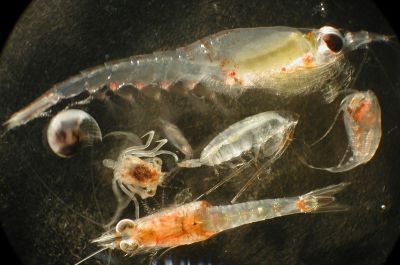The 'Role of crustacean zooplankton on prokaryotic community composition in the Mesopelagic Ocean' (ROMEO) project combined zooplankton ecology with microbial oceanography. The aim was to investigate the influence of zooplankton on the composition and activity of the prokaryotic community in the open sea of the North Atlantic. Prokaryotes are simple single-celled organisms and comprise two main groups: archaea and bacteria.
Samples of small planktonic crustaceans known as copepods were collected during two research voyages in the North Atlantic Ocean. Scientists examined the gut content of different species of copepod to obtain a detailed picture of the composition of the prokaryotic community they contained. This was compared with the composition of the prokaryotic community in the surrounding water.
The data obtained was used to investigate the difference between the bacterial composition associated with the copepods and the bacteria community collected from the open ocean. The copepod and bacterioplankton samples were collected from the same location from boundary depth layers of about 750 m and 100 m.
Results showed significant differences between the bacterial communities associated with the dominant types of copepod and the surrounding water. Bacilli and Actinobacteria dominated the copepod-associated community, whereas Alphaproteobacteria, Deltaproteobacteria and Synechococcus dominated the free-living community.
However, the presence of shared bacterial DNA sequences known as operational taxonomic units between these two distinct habitats indicates an exchange of bacteria from seawater and copepods. These results support the hypothesis that the interior and exterior surfaces of copepods provide a specific ecological niche. This niche involves a strong selective pressure that favours bacteria.
ROMEO results provide a greater knowledge of the interaction between zooplankton, the main food source for North Atlantic fish and prokaryotes. Prokaryotes are the main drivers of the oceans' biogeochemical cycles. Therefore, the project impacts our understanding of how these different groups of organisms play a major role in open sea ecosystems.
 EN
EN  CS
CS DE
DE ES
ES FR
FR HU
HU IT
IT PL
PL PT
PT РУ
РУ SK
SK TR
TR УК
УК AR
AR 中文
中文







